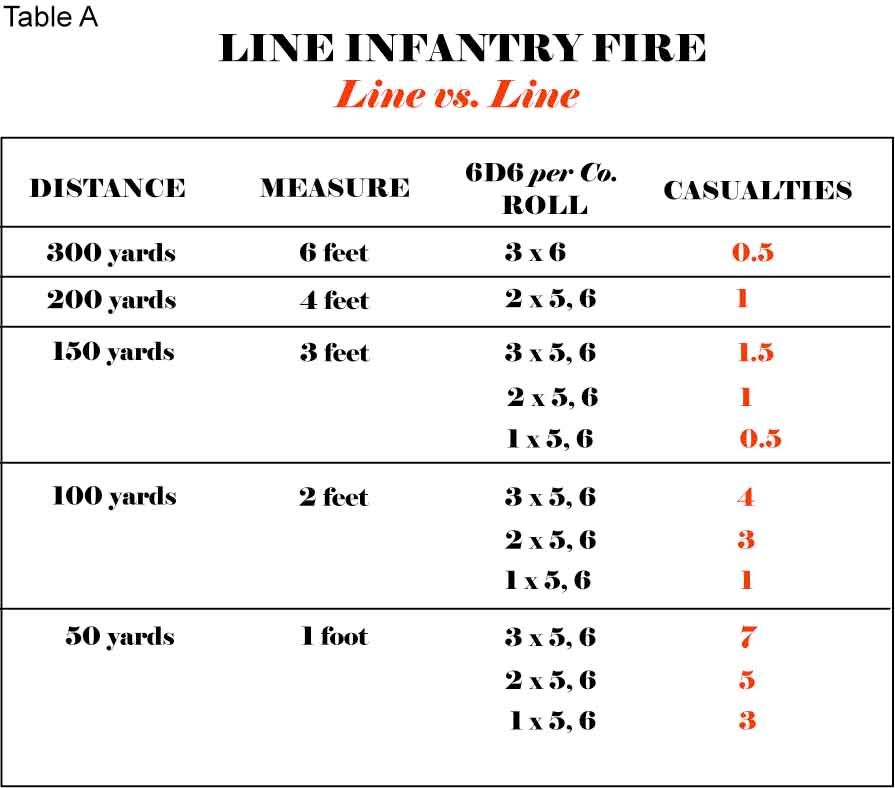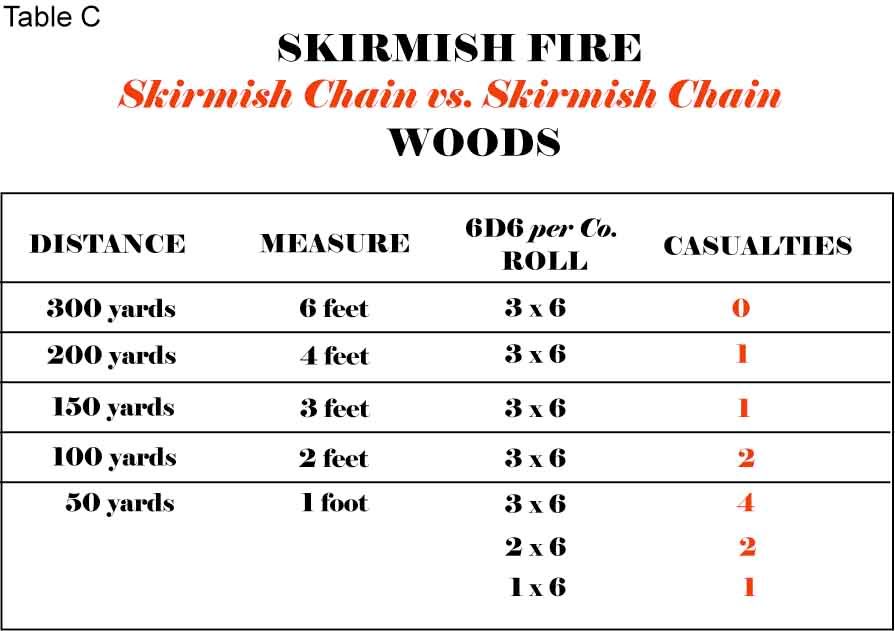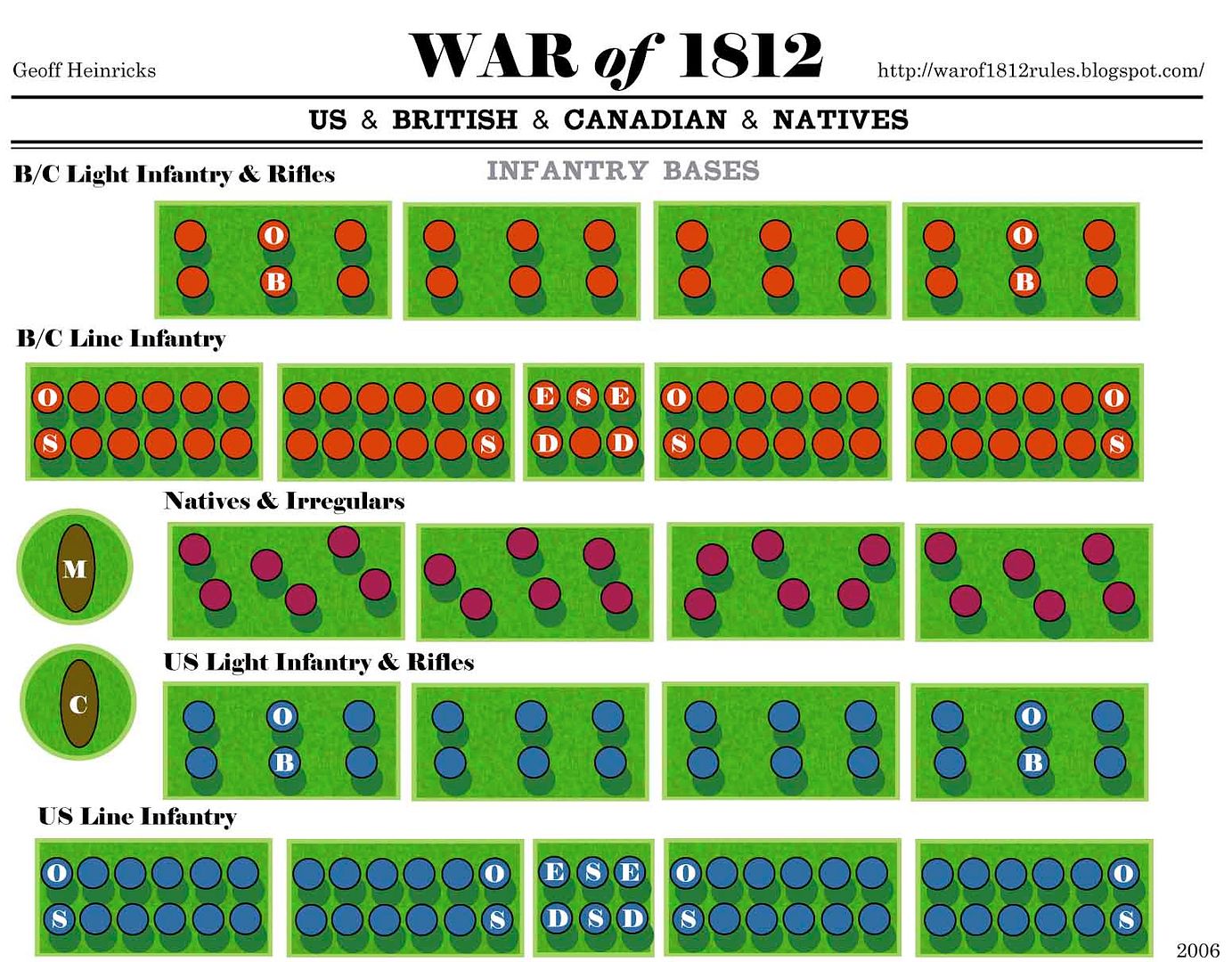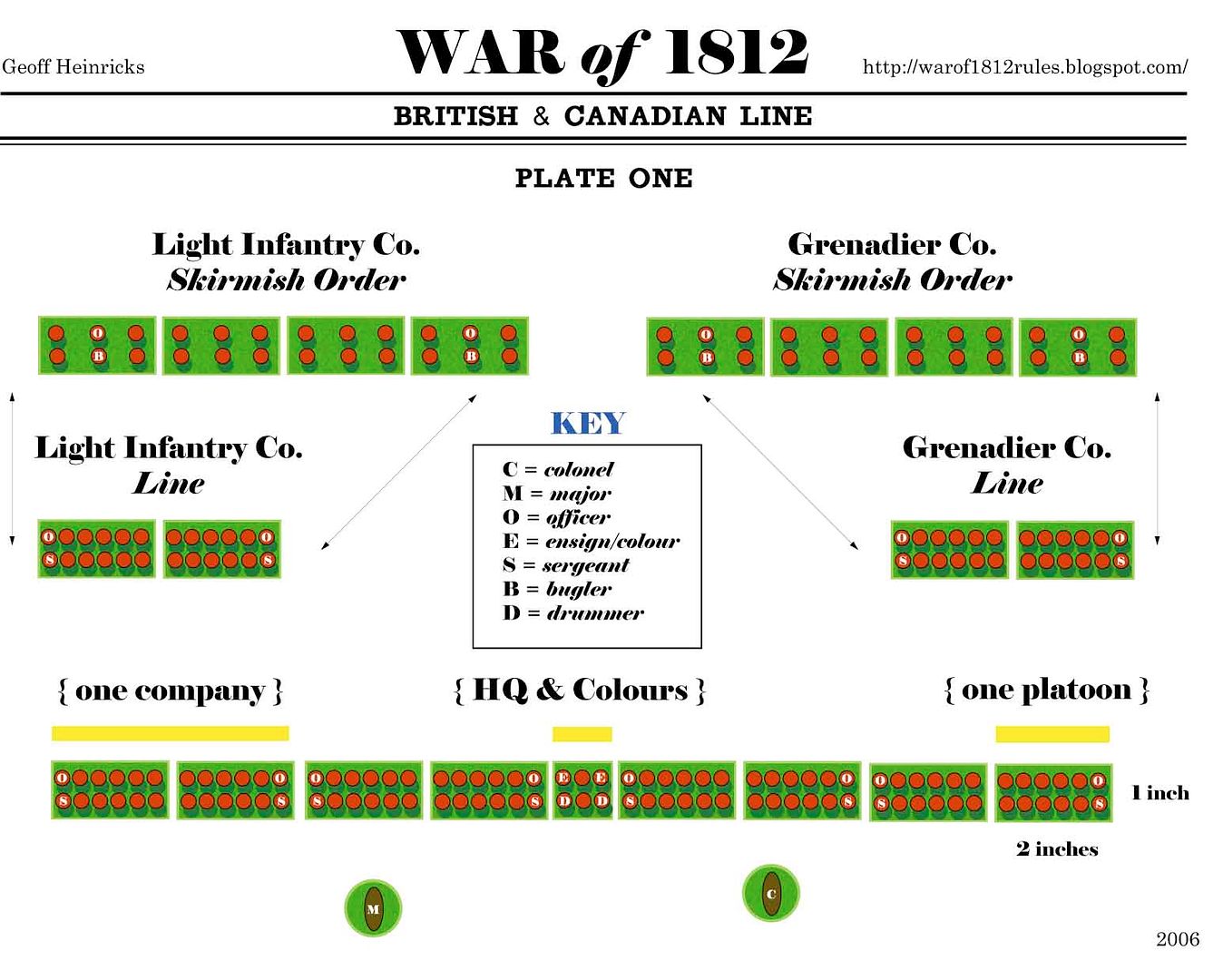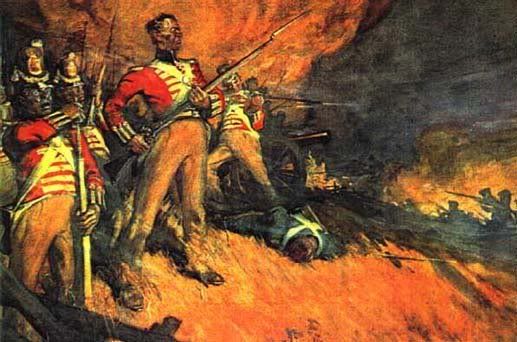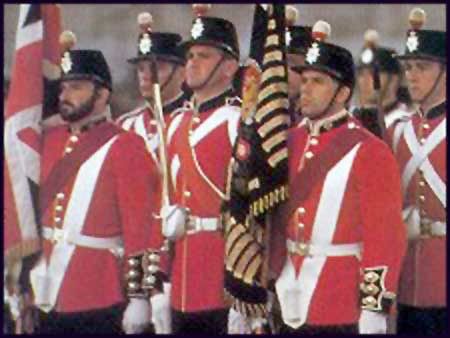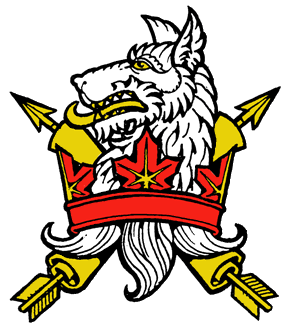Why the WAR OF 1812?

I just received two of the more recent Osprey Men-at Arms books on the War of 1812 in the mail the other day (not really that recent - 1998 and 2000...but to my eyes they are new as on publication day.)
British Forces in North America 1793–1815 and The United States Army 1812–15 join The American War 1812–14 as being the most accessible and available of uniform plate books for this conflict. Get them while they’re available and in print. After thumbing through, these titles can only help seduce new recruits for the cause, fueling dreams of collecting and painting some very unique companies and regiments.
And that prodded me to try and set down why this is should be an overwhelmingly attractive period for wargaming.
1) It’s the History, stupid!
O.K., for you Europeans, you have the real goods - Napoleon actually stomped over your continent and adjoining ones. But this is our little Napoleonic conflict.
Familiar in some respects - British contemporaneous to the Peninsular campaigns, but plucked out of the arid wastes of Iberia and plunked into the primeaval forests of the New World (although one polished a bit since the truly untamed landscape of the Seven Years War and American Revolution). But unfamiliar as as well: Natives and Upper Canadians and Lower Canadians (Newfies and Maritimers too); virtually no cavalry, other than vedettes and scouting/patrolling/communications tasks; rarely more than a battery of guns; more amphibious operations than you can shake a stick (or oar and boarding pike) at.
The Americans - raw, untried, vainglorious, and suffering from that perennial North American split personality of Anglophobia/Anglophilia & Francophilia/Francophobia. (We Canadians even founded a country on this, well, bi-polar disorder.) French artillery, French uniform trim, colours and stylings; with the translated drill manuals of Smyth, Duane and then Scott, French inspired tactical constructions. The progress is as rapid as possible, from near buffoonery to inspiring moments of polished, professional soldering.
The conflict as a whole has been classified various ways: as a draw, a British win, a Canadian win, a joint accomplishment, and a British butt-whooping...although the last is based entirely on the extra-curricular Battle of New Orleans.
The conflict changes precious little in the world, except to urge on two separate nations well along their own paths as separate nations. So from a table-top gaming exercise, I think the benefit of knowing things ultimately emerge as they were at the beginning is a healthier basepoint than being hyper-aware that Wellington is victorious over the French, the allies over Bonaparte, and that Waterloo was, ah, Napoleon’s Waterloo.
2) Small Units Perfect for the Table.
It’s about the history, so get some books. There are about a dozen great ones out there in print at the moment, or not long out of print. In any of the works by Donalde E. Graves, or Robert Malcolmson (Robin Brass Studios titles) there are nice appendices with orders of battle and unit strengths. In René Chartrand’s British Foreces in North America 1793-1815 he provides a great three page short list of various engagments and the British/Canadian units involved; the number of “flank co.”, “Merritt’s troop” and other designations show how small some of the compositional units were. They can easily fleshed out from other sources, such as George F. G. Stanley’s The War of 1812 Land Operations.
Forget recreating those unending micro-principalities and Bonapartist states of the Grand Armée. Here’s an army or two within the grasp of a human being.
3) Unusual Mix of Participants & Uniforms.
From thirty Mohawk from Tyendinaga (a few miles away to the north from where I write this, on the shore of Lake Ontario in a village named after that fellow Arthur Wellesley took a peerage), to Fencibles and Embodied Militias and the farm-chore laden kids of old Loyalist soldiers chased out of the valleys of New York, there’s new Napoleonic wargaming units very few have ever seen, if reconstructed. To that summary you must add Rangers, Voyageurs, Voltigeurs, Habitants, volunteers, Provincial Marine troops, and Captain Runchey’s Company of Coloured Men.
The professional rank and file - the 49th Regiment of Foot, the 100th Foot, the 19th Light Dragoons and Royal Artillery, and a short list of others - all take up most of the line... but in new ways, and in many cases in small detatched units of a single company, a few...rarely more than six or seven.
The Americans have the same rich mix of miltia and volunteer units as the Canadians (though few of them crossed over the border into the Canadian campaigns). The US regular infantry change uniforms more often than the chorus in Carmen, and many units are identifiable by colour - the Greys of Scott’s brigade (and others of the US in 1813 and 1814) , the blacks of 16th, and the pikes wielded by the third(!) rank of the 15th in 1813. The Rifle Regiment, in bottle green tailored uniforms, or sporting the lighter green and yellow fringed hunting smocks. The Second and Third Regiments of Artillery marching and serving as infantry throughout Upper Canadian campaigns - tagged as elite troops (along with the Rifles). The unworldly Kentuckians - mounted and on foot - as terrible as any Citadel miniature fantasy world as I’ve seen. And of course the strange beauty of the US Light Dragoons, with a uniform demonstrating that Francophilia/Anglophilia on...er...it’s sleeve.
Units you can actually collect, paint and field. In this lifetime too!
4) Brilliantly Enticing Small Engagments.
In Graves’s Field of Glory the Battle of Crysler’s Farm, 1813 he recounts what I think is the most amusing one-person engagment of the War (see pages 195-96). Sam Adams (no...not that one), of the Dundas militia volunteered just before the battle to hang out with Fraser’s troop of Provincial Light Dragoons. He went of on his own into American lines, hid by the road, and captured two American officers with an unloaded musket. Now that is something to game in skirmish format!
Even something as legendary as Beaver Dams (in Canada, tied as it is to Laura Secord), the commanding British lieutenant only had a handful of Six Nations Indians, 350 Iroquois from Lower Canada, and a company of British...with the possible arrival of the light company of the 8th, the flank companies of the 104th, and a few other assorted small units.
With these about 700 US troops were captured, including two field pieces and the colours of the 14th US Infantry.
Made for the table-top.
In fact so much of this true Little War unfolds in skirmish, probe, patrol, counter-piquet and patrol that it can be a natural Napoleonic wargaming entry point into diverting and accurate skirmish, sentry and patrol tactics and engagements...something I hope I can accomplish with this project.
5) Brilliantly Enticing Large(r) Engagments.
Still jumped up skirmishes, at least by Austerlitz standards. But again, for the table, having a brigade or two...at most three brigades available for the Americans is more than enough, especially if the company is so very often such an important unit size. (Basically a 24 man battalion in other rules is transformed into a company in this set).
Crysler’s Farm is probably the most European of the battles - with a cavalry charge too. There are only 3,000 Americans and 1,000 British and Canadians. (Lundy’s Lane and Chippewa are not far outside the European norm either.)
Without the choking numbers, some complex amphibious battles such as Plattsburgh, or the others such as Queenston, Fort George and York are within reach of a wargamer.
The divisions and the corps engagments are the late 19th Century Gilded Age equivalent of haute cuisine: vast calorie infused, delicious indulgances that sparked a great literature and tradition (strangely enough...predominently composed by the French). But something almost impossible to replicate but in prose, or as a historic reality...a ‘you had to be there’ situation. Witness the great gaming debates about 6mm (or 2mm) vs. 15mm and 28mm... where a few dozen figures are paraded about as a brigade or more. As a treat, when done well, this kind of thing is magnifient...but we also need honest wargaming bistro sustenance: something authentic, challenging, as dramatic and rich in its way as it is uncluttered and plain.
Something between dropping five bucks on a burger and fries, and $350 on dinner for two.
There’s room at the table.

British Forces in North America 1793–1815
(Men-at-Arms 319)
Author: René Chartrand
Illustrator: Gerry Embleton

The United States Army 1812–15
(Men-at-Arms 345)
Author: James Kochan
Illustrator: David Rickman

The American War 1812–14
(Men-at-Arms 226)
Author: Philip Katcher
Illustrator: Bryan Fosten






